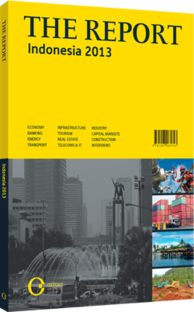Low speed ahead: Alternatives are proposed as costly high-speed rail appears stalled
High-speed rail is unlikely to come to Indonesia any time soon, with attempts so far proving to be anywhere from impractical to impossible. Nevertheless, rail is an important part of the nation’s development and there is plenty of work to be done that could greatly benefit the country at a relatively low cost. Indonesia is focusing on projects of this type, such as intra-city lines, the Mass Rapid Transit (MRT) in the capital, the upgrading of its main rail corridor, and all practical and bankable projects that yield immediate dividends.
As with most countries, the allure of high-speed rail captured the imagination of Indonesians over the past few years. It is seen as a green, potentially efficient way to connect major cities and stimulate business and the economy in the process. In 2010 it was proposed that the country build a hydrogen high-speed rail super highway (H2RSH) between Jakarta and Surabaya. The $3bn line was to run the 357-km-Jakarta-Bandung-Cirebon route and be operational by 2012. The technology being used was highly advanced and unproven – a magnetic levitation (maglev) system that would run on a line fitted with fibre optics, solar panels, electricity lines and gas pipes. The numbers proposed were hard to believe, as it was set to create 2m jobs and be built for $10m per mile, compared with $36m for conventional rail and $63m for the Shanghai maglev. In the end, the project never materialised.
BETTER, BUT STILL NO DICE: A more sensible plan was a Rp63trn ($6.3bn) line that was to run from Jakarta to Bandung in 45 minutes, making stops at Jakarta, Bekasi, Karawang, the to-be-built Karawang Airport and Bandung. It was scheduled to be operating by 2018 and tickets would have cost an estimated Rp200,000 ($20). Japan was to provide most of the funding. But Indonesia turned down the proposal just two days after it was announced. The government noted that high-speed rail usually costs much more than estimated and only makes sense when it connects major centres of finance and trade (only Tokyo-Osaka and Paris-Lyon are said to break even). It added, though, that private enterprise was welcome to pursue the idea if it wanted to go ahead without state funding.
The government also noted that it was sticking to the Rp320trn ($32bn) of rail investment outlined in the Master Plan for the Acceleration and Expansion of Indonesian Economic Development of 2011-2025. These projects – primarily the intra-city lines, the MRT and the track upgrading – do the most to increase connectivity and alleviate traffic problems. They will be pursued on a public-private partnership basis.
FILLING IN GAPS: According to the World Bank, Indonesia already has a total of 5040 km of line – 3700 of which is on Java. But the network has many deficiencies that the government hopes to address. It is incomplete, especially within the cities, so lines will be developed to remove gaps and rail will become a more realistic mode of transportation for the average person. The network also lacks capacity in certain areas. With the economic recovery, the expansion of some high-traffic lines is needed. Train transportation is also one of the most efficient means of travel and with 82% of passenger traffic going via road, it makes sense for economic reasons to make rail a more attractive option.
DOUBLING DOWN: The double tracking of the country’s main lines is therefore a top priority. Work is already under way on the North Coast (Pantura) line, which runs 700 km between Jakarta and Surabaya. At the end of 2012, about 45% of the line had been double tracked. When that job is completed at the end of 2013, the trip time between Jakarta and Surabaya will be cut from 11 hours to 9. Next up is the double tracking of the southern line, running 441 km between Cirebon and Surabaya. The government says the work will be done in 2016.
The upgrading of the southern line involves the double tracking of two segments, Kroya-Kutoarjo (76 km) and Surakarta-Madiun-Surabaya (263 km). Total cost will be Rp11.3trn ($1.13bn). The shorter segment will cost Rp4.5trn ($450m) and be financed via a soft loan from the Japan International Cooperation Agency (JICA). The longer segment will be paid for out of state funds.
You have reached the limit of premium articles you can view for free.
Choose from the options below to purchase print or digital editions of our Reports. You can also purchase a website subscription giving you unlimited access to all of our Reports online for 12 months.
If you have already purchased this Report or have a website subscription, please login to continue.

